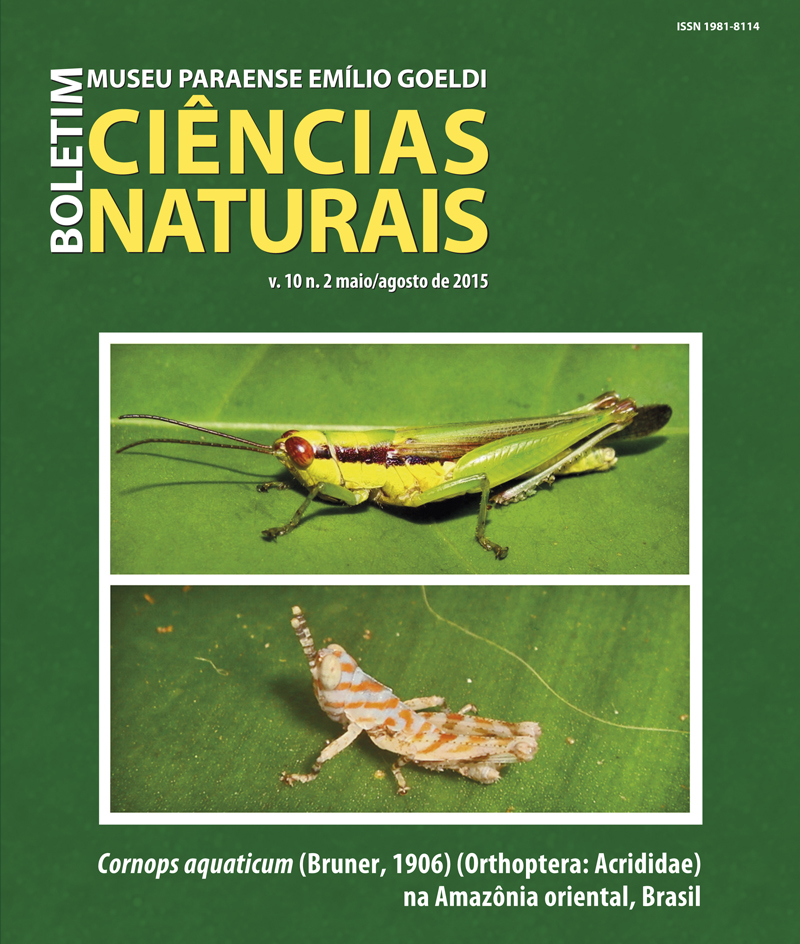Mollusks of the Romualdo Formation, Aptian-Albian, Araripe Basin, northeastern Brazil
DOI:
https://doi.org/10.46357/bcnaturais.v10i2.482Keywords:
Mollusks, Araripe, Systematics, BioeventsAbstract
Fossil assemblages of the Romualdo Formation are comprised primarily of bivalve and gastropod mollusks and echinoids, important taxa indicative of marine influence during the Aptian-Albian of the Araripe Basin, in northeastern Brazil. This manuscript describes and illustrates bivalve and gastropod mollusks pointing out their paleoecological characteristics based on 750 specimens, from the States of Pernambuco, Ceará and Piauí. This analysis resulted in the identification of Cerithium sergipensis Maury, 1936 and Tylostoma ranchariensis n. sp. and Aguileria dissita White, 1887, Corbula sp., and Brachidontes araripensis n. sp.. Paleoautoecological characters indicate epifaunal gastropods and epifaunal and semi-epifaunal byssated bivalves indicative of shallow marine (intertidal-subtidal) and saline lagoonal environments. The presence of Cerithium sergipensis and Aguileria dissita in the Romualdo as well as in the Riachuelo formation (Albian of the Sergipe Basin), characterizes a regional event of adaptive radiation. The occurrence of a new species of Tylostoma suggests marine influence of the Thetis Sea, since this taxon is characteristic of the Thetian Domain, representing a local biological innovation due to its developmental success in these formations and to favorable global geological processes.
Downloads
Published
Issue
Section
License
Publication means fully assigning and transferring all copyrights of the manuscript to the journal. The Liability Statement and
Assignment of Copyrights will be enclosed with the notice of acceptance. All the authors must sign the document and return it to the journal.








